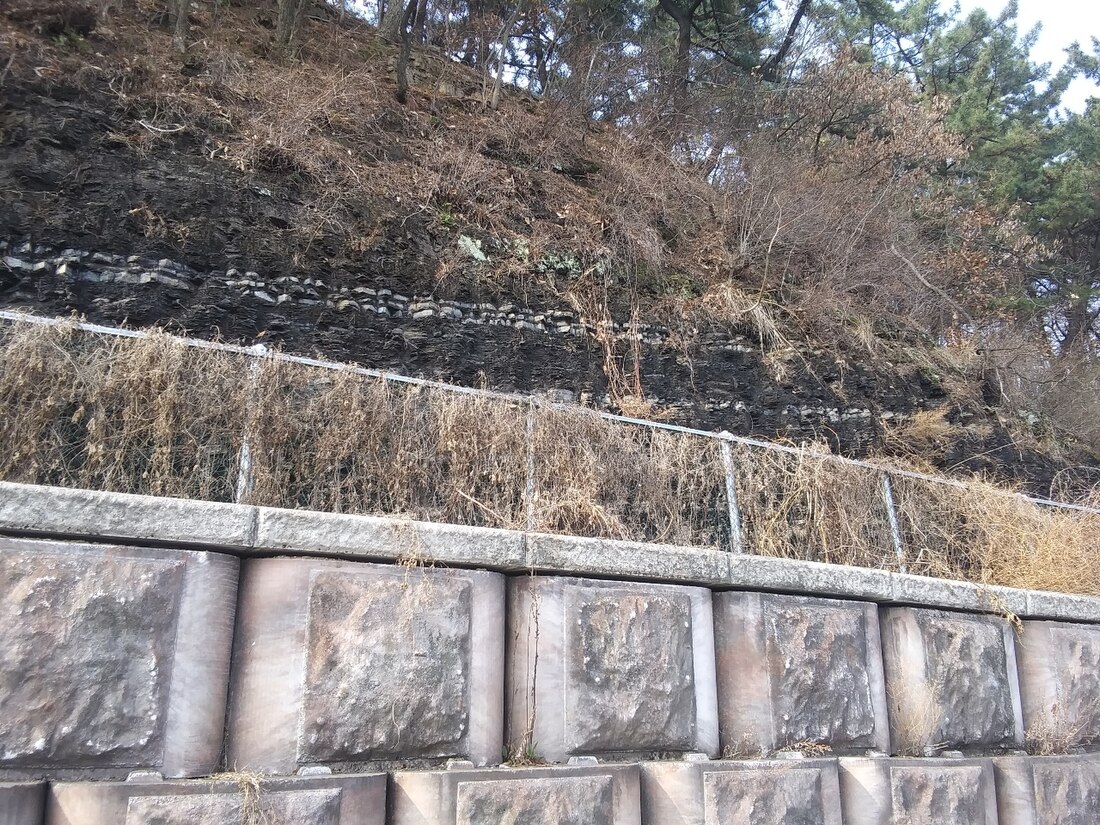Top Qs
Timeline
Chat
Perspective
Geoncheonri Formation
Early Cretaceous geologic formation in South Korea From Wikipedia, the free encyclopedia
Remove ads
The Geoncheonri Formation (Korean: 건천리층; Hanja: 乾川里層; RR: Geoncheolli-cheung) is an Early Cretaceous (Aptian-Albian) geologic formation of the Hayang Group in the Gyeongsang Basin of southeast South Korea.[1] Fossil ornithopod tracks,[2] as well as fossils of Kirgizemys have been reported from the lacustrine siltstones and mudstones of the formation.[3]
Remove ads
Description
Summarize
Perspective
The Geoncheonri Formation (ca. 800 metres (2,600 ft) thick) is the uppermost formation of the Hayang Group, belonging to the Gyeongsang Supergroup. The Gyeongsang Supergroup is widely distributed in the southeastern part of the Korean Peninsula, mainly within the Gyeongsang Basin, which is the largest sedimentary basin of South Korea. It is divided into the Shindong and Hayang Groups, consisting mainly of thick siliciclastic sequences of alluvial, fluvial and lacustrine sediments, and the Yucheon Group, characterized by the dominance of volcanic rocks.[4]
The Hayang Group consists of Chilgok, Silla, Hakbong, Haman, Banyawol, Songnaedong, Chaeyaksan and Geoncheonri Formations in ascending order. The Geoncheonri Formation is conformably underlain by the Chaeyaksan Formation and overlain by the Jusasan Formation, the lowermost of the Yucheon Group.[4]
Since plant fossils were first reported in the Geoncheonri Formation in 1925, a series of paleontological studies has been made with molluscs, spores and pollen, charophytes, and dinosaur footprints. Plant fossils from the Geoncheonri Formation were correlated with the Monobegawa Group and the Gyliak Series (Lower to "Middle" Cretaceous) in Japan. Yang (1978) noted that the co-occurrence of a bivalve Trigonioides paucisulcatus in the Geonchonri Formation and in the Gyliakian Goshonoura Group (Cenomanian to Turonian) of Japan. However, primitive angiosperm pollen (Retimonocolpites peroreticulatus and Tricolpites sp.) and other palynological features suggest that the age of the Geoncheonri Formation is Aptian to Albian. The charophytes from the Geoncheonri Formation also indicate an Aptian to Albian age.[4]
Remove ads
Fossil content
The following fossils were reported from the formation:[1]
- Turtles
- Ostracods[5]
- Cypridea sp.
- Lycopterocypris cf. profunda
- Cypria cf. elata
- Ichnofossils
See also
References
Wikiwand - on
Seamless Wikipedia browsing. On steroids.
Remove ads


